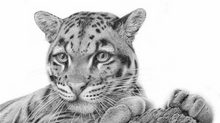Adorable Brown Bear Cubs: Fascinating Facts About These Youngsters
- Vincenzo De Luca
- Apr 15, 2023
- 2 min read
Introduction:
Brown bear cubs are one of the most adorable and fascinating creatures in the animal kingdom. These young bears are born small and helpless, but quickly grow into curious and adventurous youngsters. In this article, we will explore some interesting facts about brown bear cubs and their development.

Birth and Early Life:
Brown bear cubs are born during the winter months while their mother is in hibernation. They are born blind and hairless, weighing only around 1 pound. In the safety of the den, the cubs will nurse and sleep for several months until they are strong enough to venture outside.
As the cubs grow, they become more curious and adventurous. They will start to explore their surroundings, playing and wrestling with one another, and learning how to climb trees.
Social Behavior:
Brown bear cubs are highly social animals and stay with their mother for the first two to three years of their life. During this time, they learn important survival skills such as hunting, foraging, and avoiding danger.
The mother bear is highly protective of her cubs and will fiercely defend them against any threats. Cubs also learn important social skills from their siblings, such as how to interact with other bears and how to establish dominance.

Habitat and Diet:
Brown bear cubs are found in forests and mountains throughout North America, Europe, and Asia. They primarily feed on vegetation such as berries, nuts, and roots, but will also eat insects and small animals.
As they grow older, they become more adept at hunting and fishing, eventually becoming self-sufficient hunters and leaving their mother's care.
Conservation:
Brown bear cubs face several threats, including habitat loss and human conflict. As human populations continue to expand, the natural habitat of brown bears is becoming increasingly fragmented. This leads to conflict with humans over resources, such as food and space.
Conservation efforts are underway to protect brown bears and their habitat. These efforts include creating protected areas and working with local communities to reduce human-wildlife conflict.
Conclusion:
Brown bear cubs are fascinating and adorable creatures that play an important role in the ecosystem. By taking action to protect brown bears and their habitat, we can ensure that these young bears continue to thrive for generations to come.














































Comments